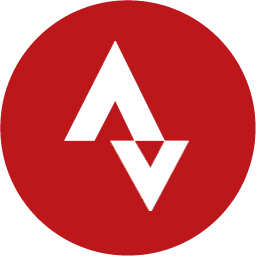After the frame and wheels, the drivetrain is one of the key elements when choosing a road bike. That's why its choice bears thinking about and is not to be taken lightly. Here's a little guide so you don't make a mistake in choosing one, depending on your practice and your goals.
What does a bicycle transmission consist of?
The transmission is used to transform the power transmitted by your pedaling to the wheel to put your bike in motion. On a road bike, it is composed of several components. A quick rundown to make your choice easier if you want to change the transmission on your bike or buy a new one.
The crankset
The pedalboard is equipped with chainrings. Depending on your practice, there are different kinds of cranksets: mono chainring, double chainring (double, compact or mid-compact), triple chainring. Each chainring has a certain number of teeth, more or less depending on its category.
Today, the most common on new bikes is the compact (with 50 and 34 teeth in general) which remains quite versatile.
>
Cranks and pedals
The pedals are the link between the rider's foot and the transmission. The cranks, on the other hand, connect the pedals to the crankset and come in different lengths.
The front derailleur
The front derailleur moves the chain between the chainrings. It is controlled from the left handle of the bike.
The rear derailleur
The rear derailleur is composed of springs and rollers. It allows you to change gears and is controlled from the right handle of the bike.
The cassette
The cassette is located on the rear wheel of the bike. It consists of sprockets, which in turn consist of a number of teeth.
The chain
The chain connects all the elements of the drive system.
The transmission controls
The transmission controls are handles located on the handlebars of the bike, on the left and right. The cables used to control them are located in sheaths.
Mechanical or electric?
For several years, some brands have offered electric drive units, which are much more expensive than their mechanical counterparts.
- The electric transmission allows for greater comfort and efficiency: indeed, it allows for faster and more precise gear changes. But, given its extra cost, it remains reserved for big budgets...and cyclists looking for performance.
- The mechanical transmission remains a safe bet...and is especially much more accessible in terms of budget. In addition, it requires less maintenance.
How many speeds?
In the past, the most common cassettes had 8, 9 or 10 speeds. Now, on most bikes, you'll find cassettes with 11 speeds (Shimano) or 12 speeds (Campagnolo or Sram) instead.
The choice of cassette spacing is specific to each cyclist depending on their practice...but also depends on your derailleur (in fact, to go beyond 30 teeth, you'll generally have to opt for a long-case derailleur).
The most commonly encountered gearing is 11-28, but this can go up to 34 teeth for the beginner cyclist or one who trains in a very mountainous area.
Main brands
When it comes to drivetrains, the three main brands that share the market are Shimano (which equips most bikes sold new), Campagnolo and Sram. One way each brand differentiates itself is through its technological advances.
Other brands such as Rotor (whose specialty is the ovalized chainring) or FSA are also making their mark on the market.
Incompatibility between brands
It's not innocent that most drivetrains are sold complete or in kits that include derailleurs and brake levers with gears because mixing elements from multiple brands is increasingly complicated, if not impossible, as the models of the main competitors differ so much over the years.
Even within a single brand, it will be necessary to think about checking the compatibility of each element because it is not a given that two elements from a different range are compatible with each other.
What are the differences between low end and high end?
The higher you go in the range, the more noble the materials used will be, which will result in lower weight (which can be up to a kilo and a half between low-end and very high-end), better durability, improved comfort and precision...but this will not profoundly change the behavior of your bike.
A mid-range groupset is often a good compromise in terms of quality / price ratio because you have to know that the budget makes the big difference between 500 euros for the cheapest and more than 4000 euros for the most expensive.
In the design of a bike, and in the same way as the choice of frame or the choosing a wheelset, so the choice of a drivetrain is not to be overlooked. So it's up to you to find a compromise between your budget and your performance expectations.






